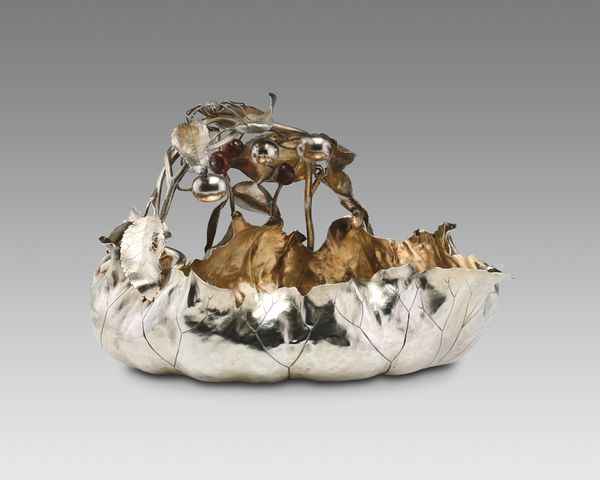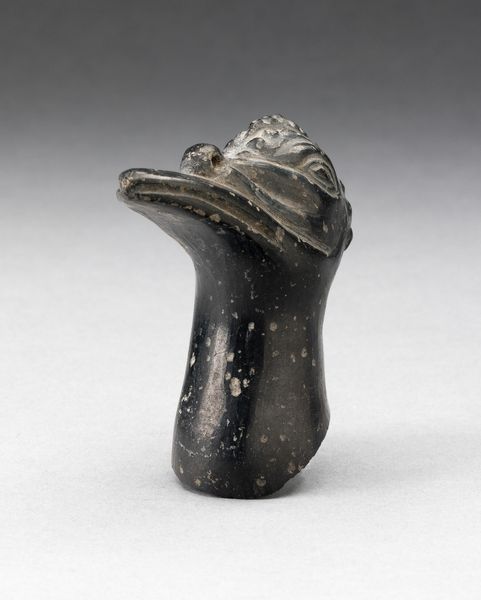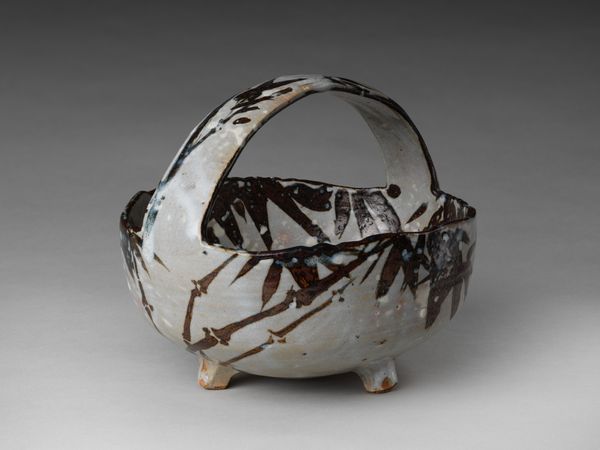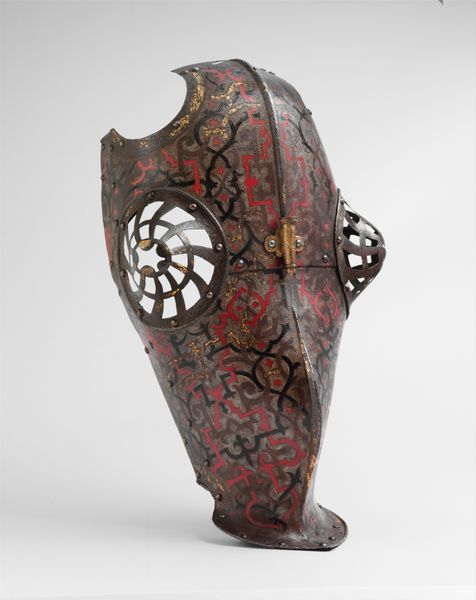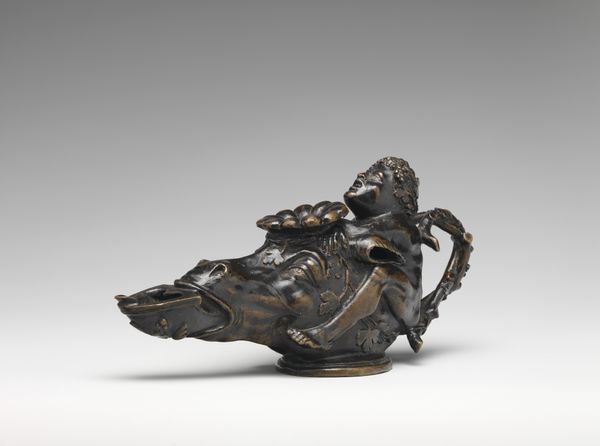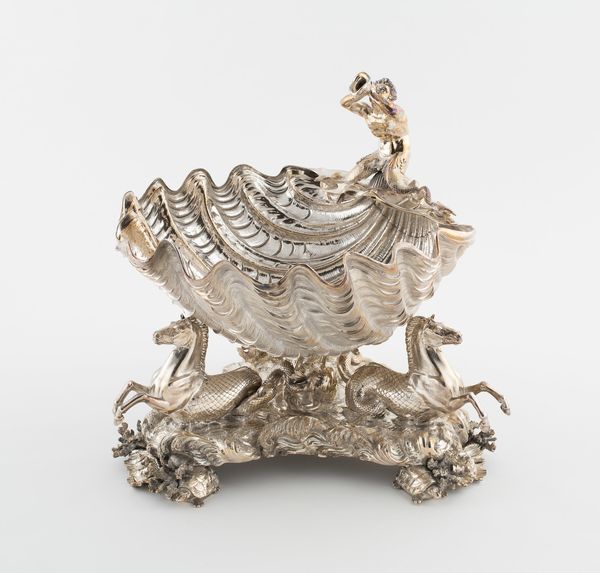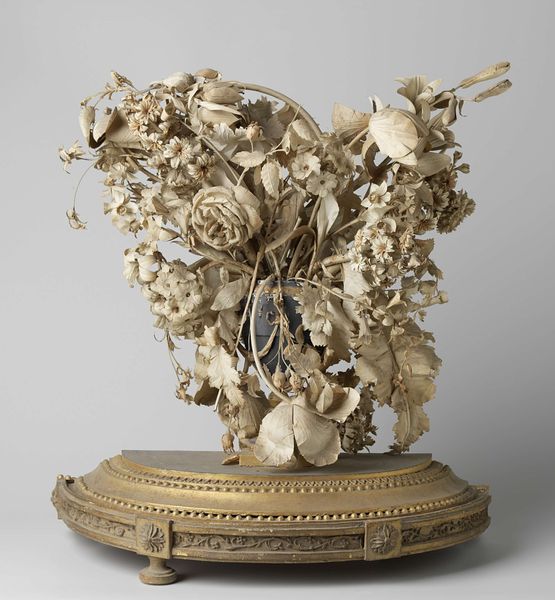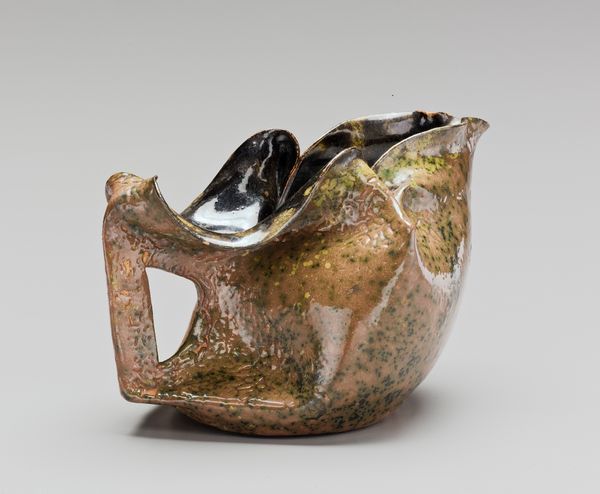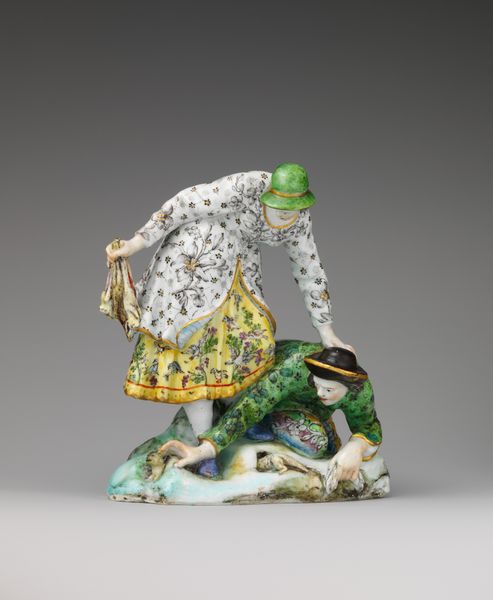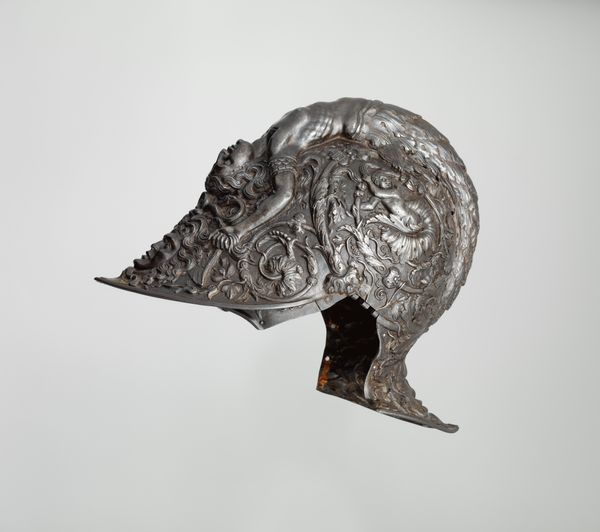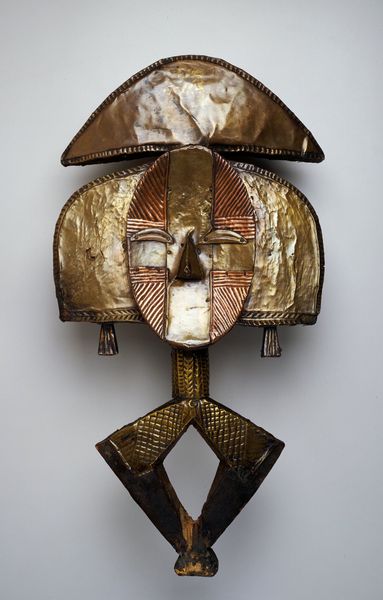
metal, sculpture
#
portrait
#
metal
#
stone
#
sculpture
#
sculptural image
#
sculpture
#
united-states
#
decorative-art
Dimensions: 15.9 × 21.6 × 26.1 cm (6 1/4 × 8 1/2 × 10 1/4 in.)
Copyright: Public Domain
Editor: Here we have "Woman's Hat (Anniversary Tin)," a metal sculpture made sometime between 1850 and 1900 by an anonymous artist. It's currently held at the Art Institute of Chicago. The floral and bow embellishments give it a touch of sweetness. How do you interpret this piece? Curator: The materiality of the sculpture speaks volumes, doesn’t it? Common metal transformed into something considered high fashion begs the question: whose fashion are we considering? The industrial revolution made manufactured metal commonplace, a material now accessible to working-class women. Is this a satire on elite culture or a celebration of resourcefulness? Editor: I hadn’t considered the class implications. So, the material isn't just about mimicking fancier hats, but maybe commenting on who gets to participate in the world of fashion? Curator: Exactly. The anonymous nature of the artist further complicates our understanding. We lack biographical context but that also focuses attention on the object and what it represents for the collective, particularly women from that era. Think about the era, its social constraints and what claiming adornment might have meant. Does this defiance feel empowering, satirical, or both? Editor: I see it now. It's a fascinating way to examine women's history and their place in society. It almost feels subversive to take an industrial material and make something decorative and feminine. Curator: And doesn’t it also invite reflection on labor, artistic expression, and the narratives we weave around both? We must remember that art objects do not exist in a vacuum, separate from identity and historical context. What appears delicate, through your knowledge will bring a newfound boldness and agency to our experience of this anonymous sculpture. Editor: That's definitely given me a new perspective on how art can act as a form of cultural commentary and perhaps also defiance. Curator: Precisely, always dig a little deeper, because what’s at the surface usually only reveals a piece of a complex history.
Comments
No comments
Be the first to comment and join the conversation on the ultimate creative platform.
